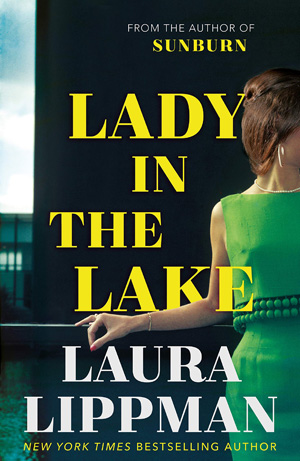
Laurel Lippman is an author who has garnered a legion of fans over the years – including Stephen King, who has reviewed Lady in the Lake for the New York Times, no less – so how does Laura Lippman keep writing such fresh and original novels?
Perhaps it’s because, in this case at least, she’s writing about something she knows. Lippman was a reporter for 20 years, with 12 of them based at the Baltimore Sun. Consequently, creating the character of Maddie Schwartz, Baltimore housewife-turned-cub-reporter, must have been a cinch… mustn’t it?
Well no, actually. Because instead of setting Lady in the Lake in the annals of recent history, Lippman plops her story slap bang in the middle of the 1960s. It mightn’t sound that long ago, but things have moved on a mighty long way since then.
Like the role of women. These days the sight of a female journalist is commonplace; back then women had to work extra hard for a spot in the newsroom. Most females behind a typewriter were secretaries, and it is in an admin role that Maddie first gets a foot in the door at the Sun. Freshly separated from her husband and with a career history as a housewife, it’s only to be expected really. Having just broken out of the cocoon of wedlock she’s determined to make something of herself.
The opportunity arrives in macabre fashion when she and her friend find the body of a young girl who has been missing for days. Tessie Fine is from a well-to-do Jewish family and her story makes the front pages of the local press. Maddie finally has an ‘in’ to her dream of becoming a reporter but she has to fight mighty hard to be given a chance.
Meanwhile, in her regular job as assistant to the Helpline desk, Maddie stumbles upon anther scoop… and another dead body. Someone complains that the lights in the fountain at Druid Hill Park have gone out, so Maddie puts in a call. An electrician in a rowboat is about to find the body of Cleo Sherwood, missing since New Year. Maddie wants to tell Cleo’s story, but who wants to read about a dead black woman in an era when segregation and discrimination were the norm?
Maddie ignores all the people telling her ‘no’ and goes her own way, determined to get to the bottom of Cleo’s disappearance no matter the cost. And believe me, the costs are mounting, page by page… The phrase be careful what you wish for was never more pertinent.
The story progresses in jerky fashion, with the main narrative punctuated by observations from vital players in the game, with the dead victim Cleo chipping in on many occasions. Some of these chapters are sweet, some snide, others plain baffling, but each one offers a telling insight as the onlooker takes their moment in the limelight. The inclusion of these character viewpoints can be a little annoying at times, but when they eventually petered out I found myself missing them.
Maddie herself is a cross between Lois Lane and the Marvellous Mrs Maisel. She’s inquisitive, determined, self-centred and sometimes very irritating but overall I warmed to her. This is a woman not averse to taking chances – both at work and in her love life – and she’s beautifully rendered by Lippman. My favourite character of all, however, is the newspaper itself. The descriptions of the newsroom, its politics, foibles and dramas are pin sharp in their realism and you can almost smell the printers ink and feel the vibration of the rolling presses.
Lady in the Lake drags you hook, line and sinker into a turbulent era and holds you there until the final, gasp-inducing reveal. This is immersive crime writing at its very best.
For more 1960s newspaper crime, try Front Page Murder by Peter Bartram, set in Brighton. Another Laura Lippman standalone worth reading is Sunburn, reviewed here.
Faber & Faber
Print/Kindle/iBook
£3.79
CFL Rating: 5 Stars